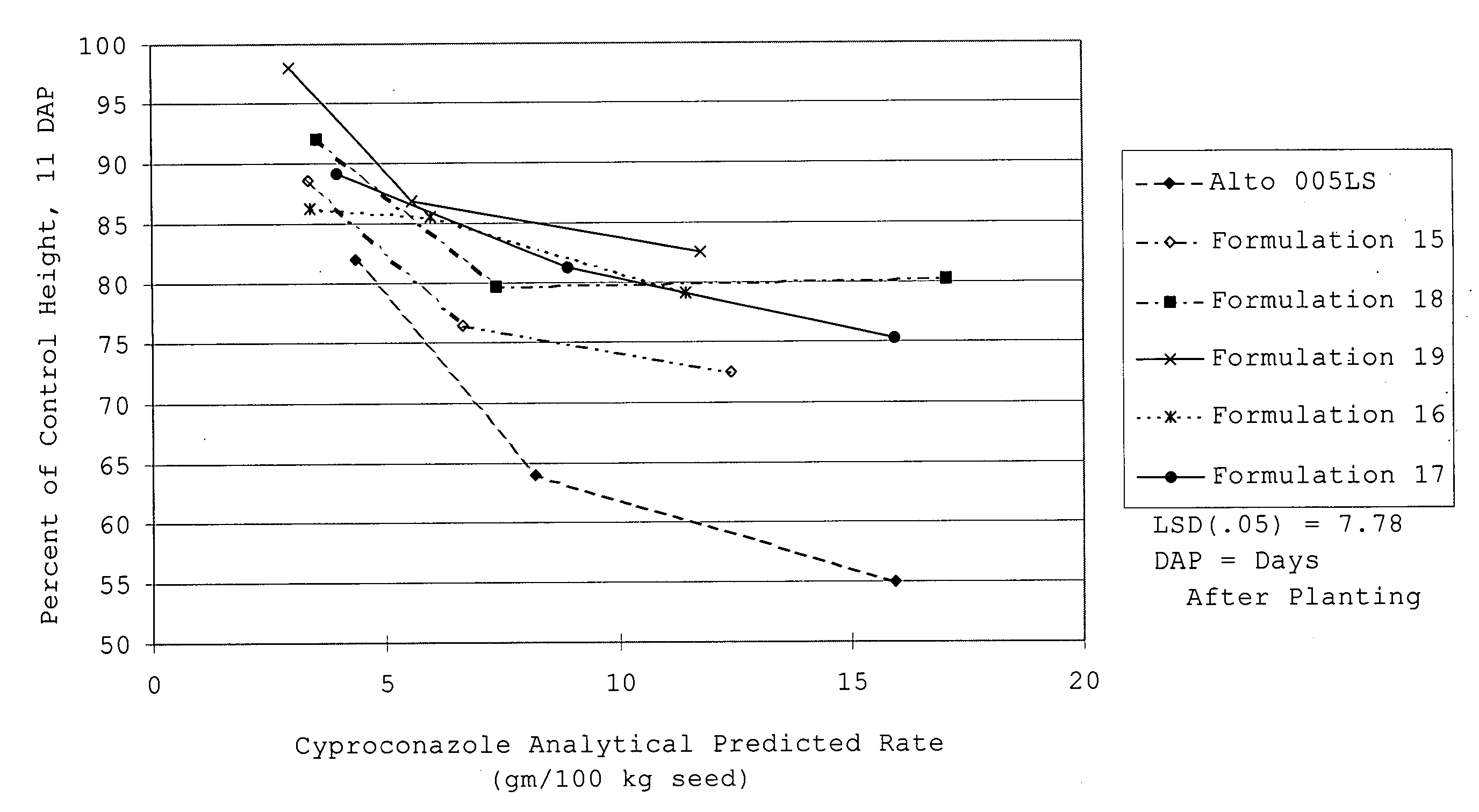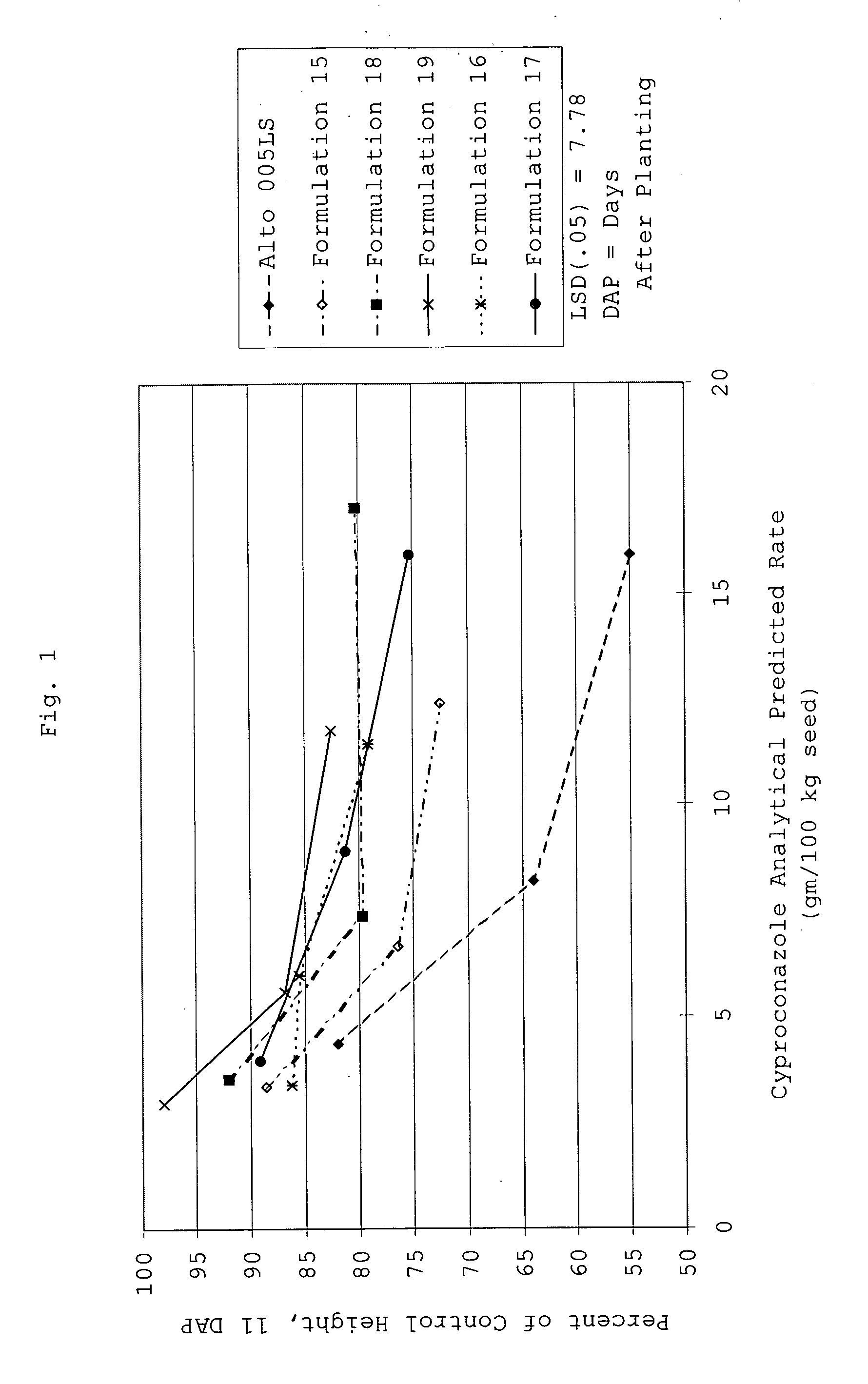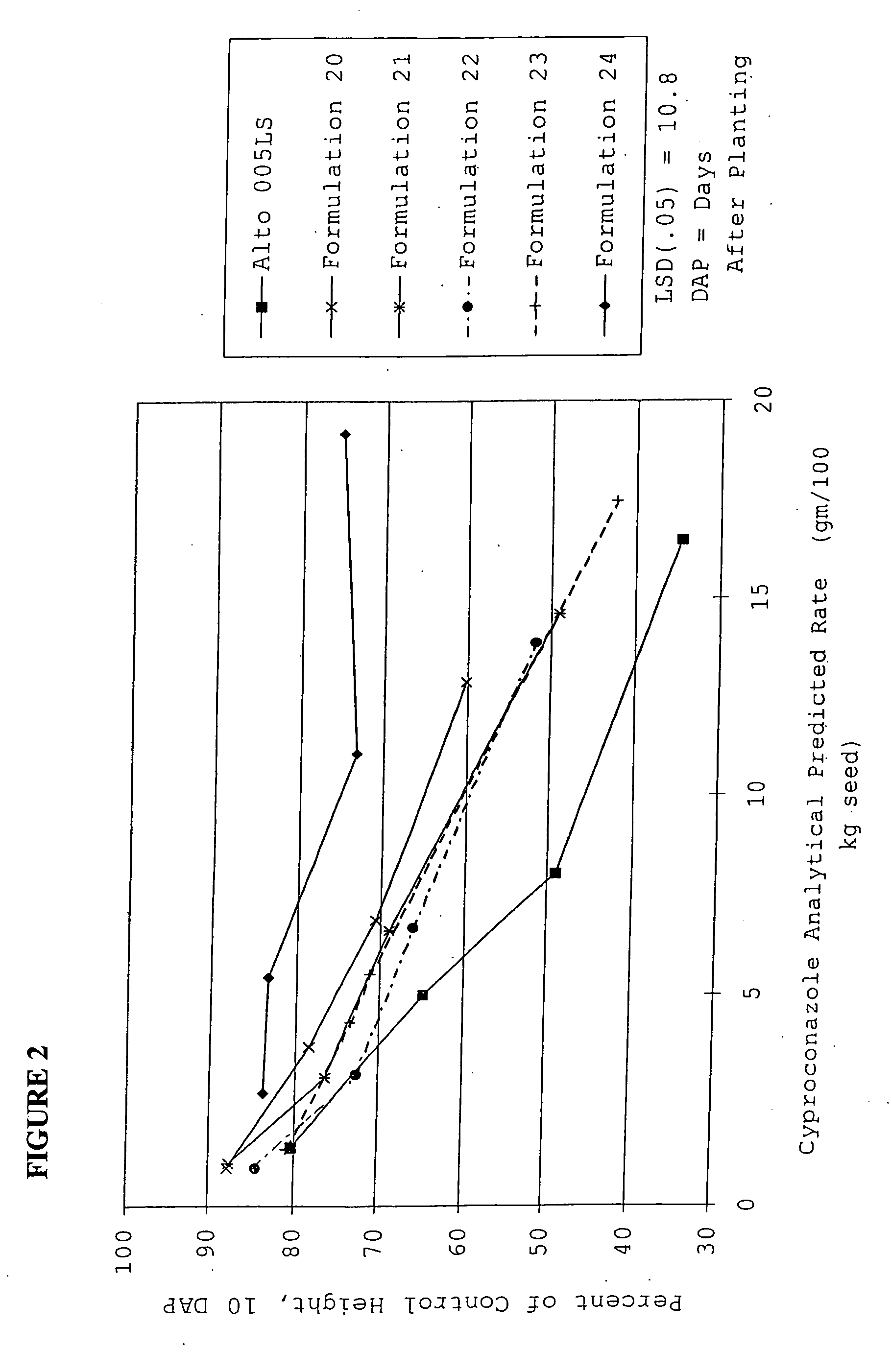Particles containing agricultural active ingredients
a technology of active ingredients and agricultural products, applied in the field of agricultural chemical compositions and methods, can solve the problems of reducing the environmental impact of chemical treatment, and achieve the effect of reducing plant phytotoxicity and effective fungicidal control
- Summary
- Abstract
- Description
- Claims
- Application Information
AI Technical Summary
Benefits of technology
Problems solved by technology
Method used
Image
Examples
example 1
[0177] 3.72 g of cyproconazole (96.3% purity; Sandoz Agro, Ltd., Basel, Switzerland) and 14.3 g of polylactic acid (Chronopol 95; Chronopol, Golden, Colo.) were dissolved in 156 g methylene chloride (Burdick & Jackson, Muskegon, Mich.) in a glass bottle with shaking to produce a hydrophobic solution.
[0178] 7.5 g of polyvinyl alcohol (Elvanol 51-05; DuPont, Wilmington, Del.)) was dissolved with stirring in deionized water to produce 1500 g of hydrophilic solution.
[0179] The hydrophobic solution was added to the hydrophilic solution and the mixture was vigorously stirred to produce an emulsion. The stirring continued for one hour. Microscopic examination of the appearance and size of the oil droplets in the emulsion showed that the average size of oil droplets was in the 30-50 micrometer (micron, μ) range.
[0180] The emulsion was then transferred to a two liter (L) round bottom flank and attached to a rotary evaporator to remove the methylene chloride at a reduced pressure. The fina...
example 2
[0184] 1.56 g cyproconazole (96.3% purity) and 13.44 g cellulose acetate butyrate polymer (Sigma Chemical Co., St. Louis, Mo.) were dissolved in 82.22 g methylene chloride in a glass bottle with shaking to produce a hydrophobic solution. 1.00 g of Methocel® A15LV and 20 g of urea were dissolved in 64 g deionized water to prepare 85 g of a hydrophilic solution. The hydrophobic solution was added to the hydrophilic solution with stirring to produce an emulsion. The emulsion was stirred for 5 minutes to equilibrate. To reduce the particle size further, the emulsion was sonicated for 5.5 minutes with a sonic dismembrator (Model 550, Fischer Scientific, Pittsburgh, Pa.) using a variable power range. Cooling was provided by an ice bath to keep the temperature below 30° C. Microscopic examination showed particles mainly in the 4-5 micron range. The emulsion was transferred to a rotary evaporator and methylene chloride stripped off as described in Example 1. The resulting product was passed...
example 3
[0186] Following the general procedure of Example 2, matrix particle suspensions having the compositions given below were produced. For Formulation 3, methylene chloride was evaporated with stirring at atmospheric pressure. For Formulation 4, Formulation 5, Formulation 6, and Formulation 7, methylene chloride was evaporated with a rotary evaporator at reduced pressure. For Formulation 7, Van Gel® B was added as part of the aqueous carrier medium. Poly(methylmethacrylate) (PMM) and polystyrene (50,000 MW) were obtained from Polysciences Inc. (Warrington, Pa.)
Weight % of IngredientsFormulation NumberIngredients34567Cyproconazole*1.501.503.003.003.00Chronopol 9513.5013.50———PMM——6.0012.006.00Polystyrene——6.00—6.00Methocel A15LV1.001.001.061.06—Urea20.0020.00———Van Gel B————3.40Water64.0064.0083.9483.9481.60Total100.00100.00100.00100.00100.00
*100% a.i. basis. Compensate for purity with polymer.
[0187] The matrix particle suspensions had the following properties:
FormulationProperties...
PUM
| Property | Measurement | Unit |
|---|---|---|
| mean diameter | aaaaa | aaaaa |
| mean diameter | aaaaa | aaaaa |
| mean diameter | aaaaa | aaaaa |
Abstract
Description
Claims
Application Information
 Login to View More
Login to View More - R&D
- Intellectual Property
- Life Sciences
- Materials
- Tech Scout
- Unparalleled Data Quality
- Higher Quality Content
- 60% Fewer Hallucinations
Browse by: Latest US Patents, China's latest patents, Technical Efficacy Thesaurus, Application Domain, Technology Topic, Popular Technical Reports.
© 2025 PatSnap. All rights reserved.Legal|Privacy policy|Modern Slavery Act Transparency Statement|Sitemap|About US| Contact US: help@patsnap.com



